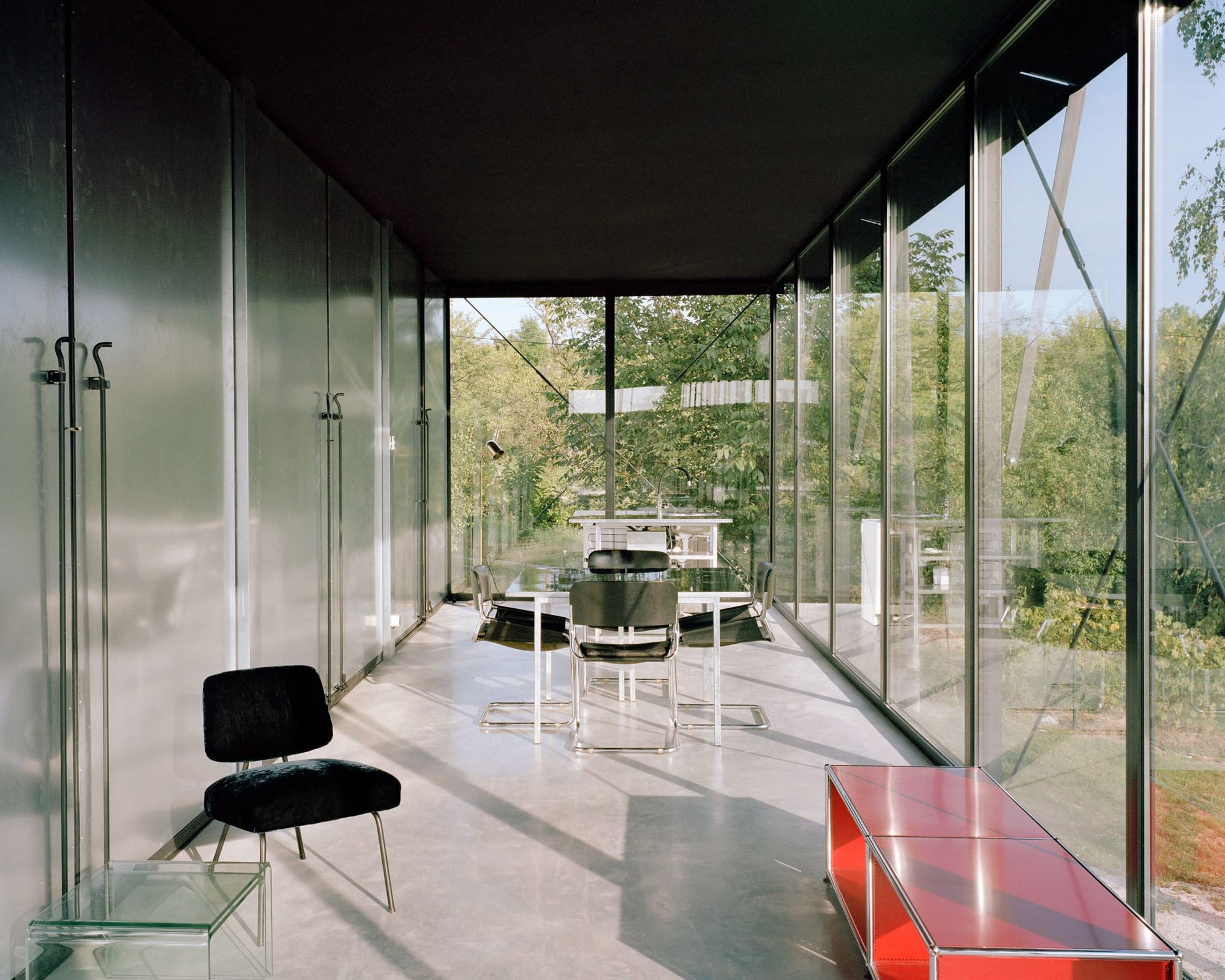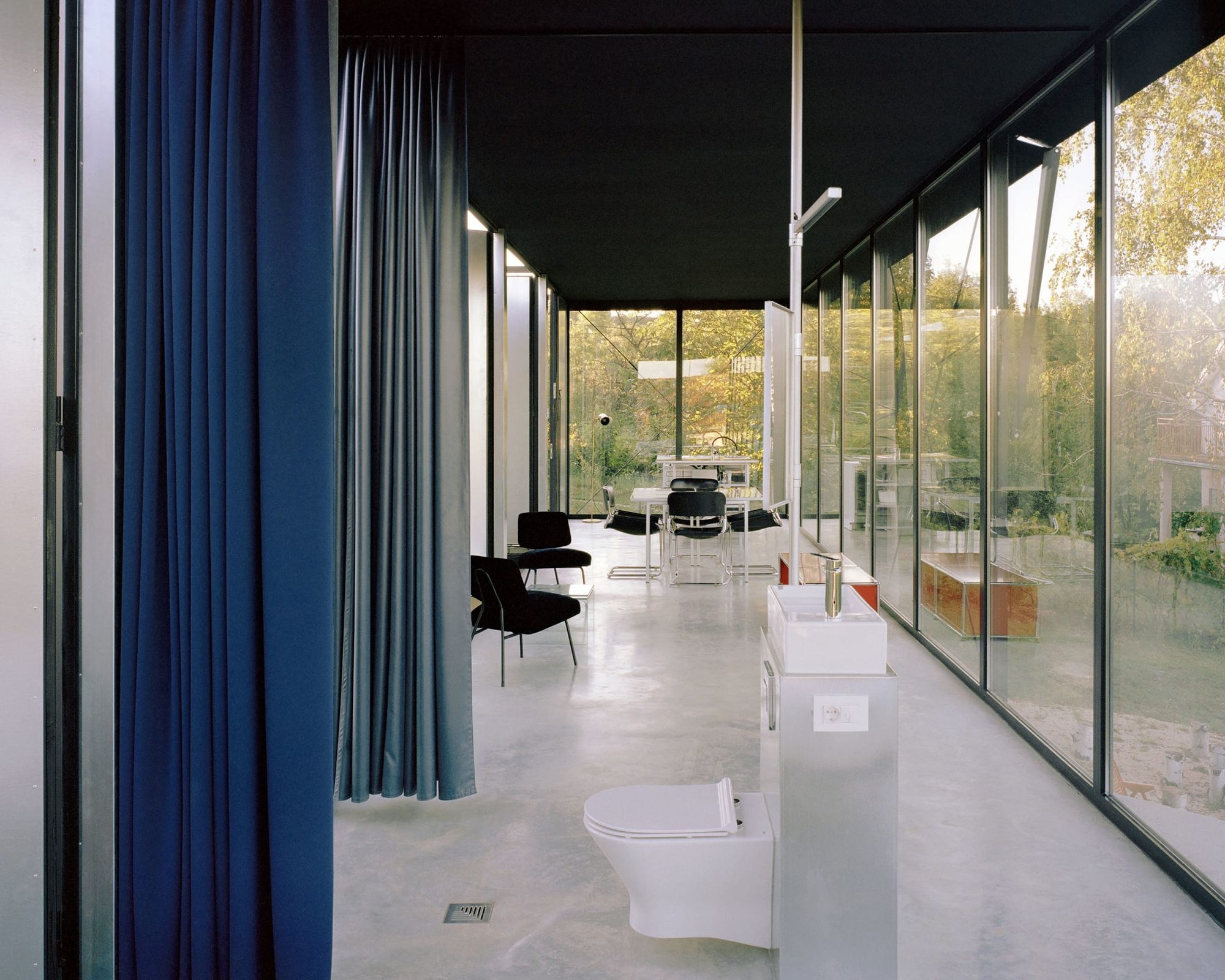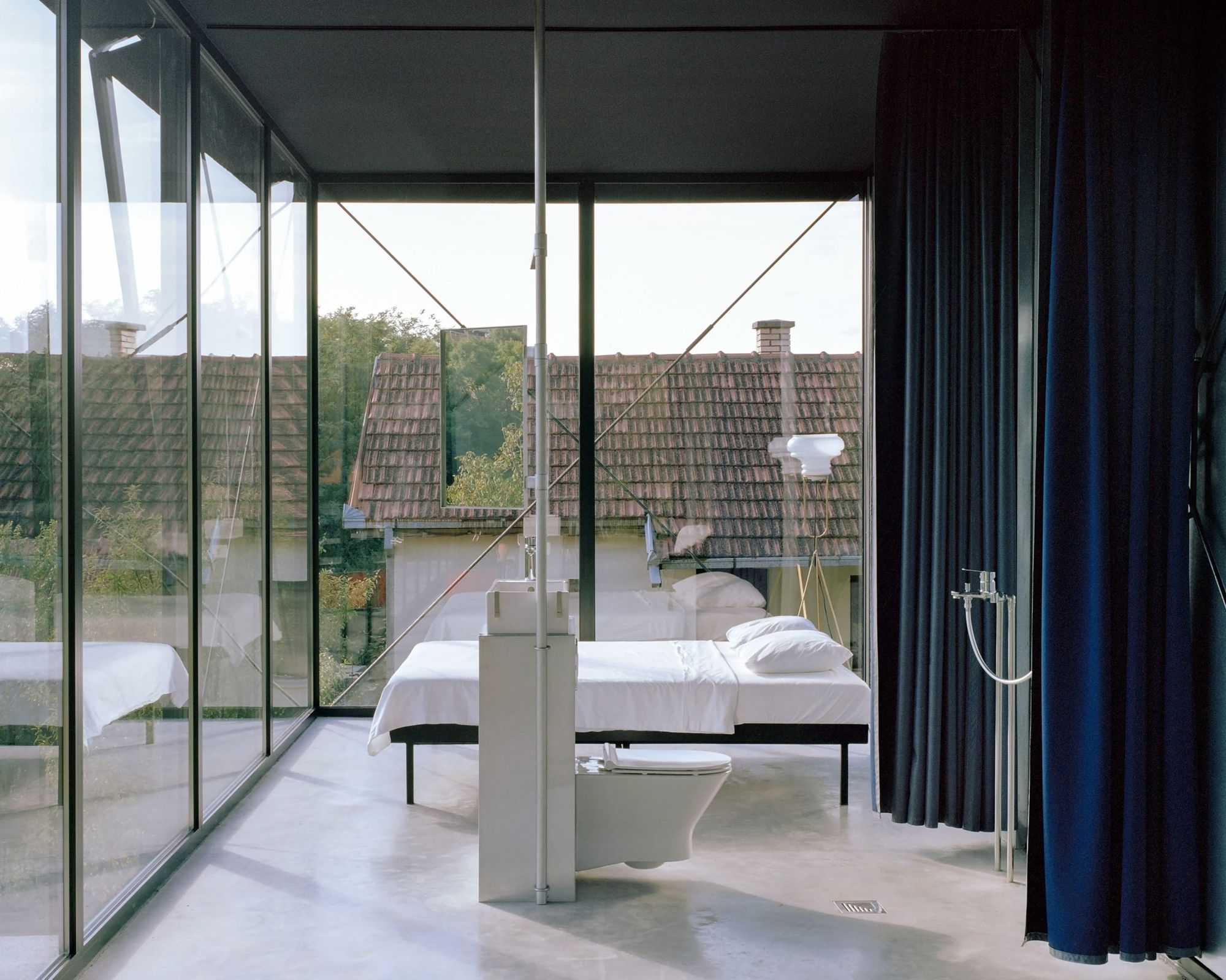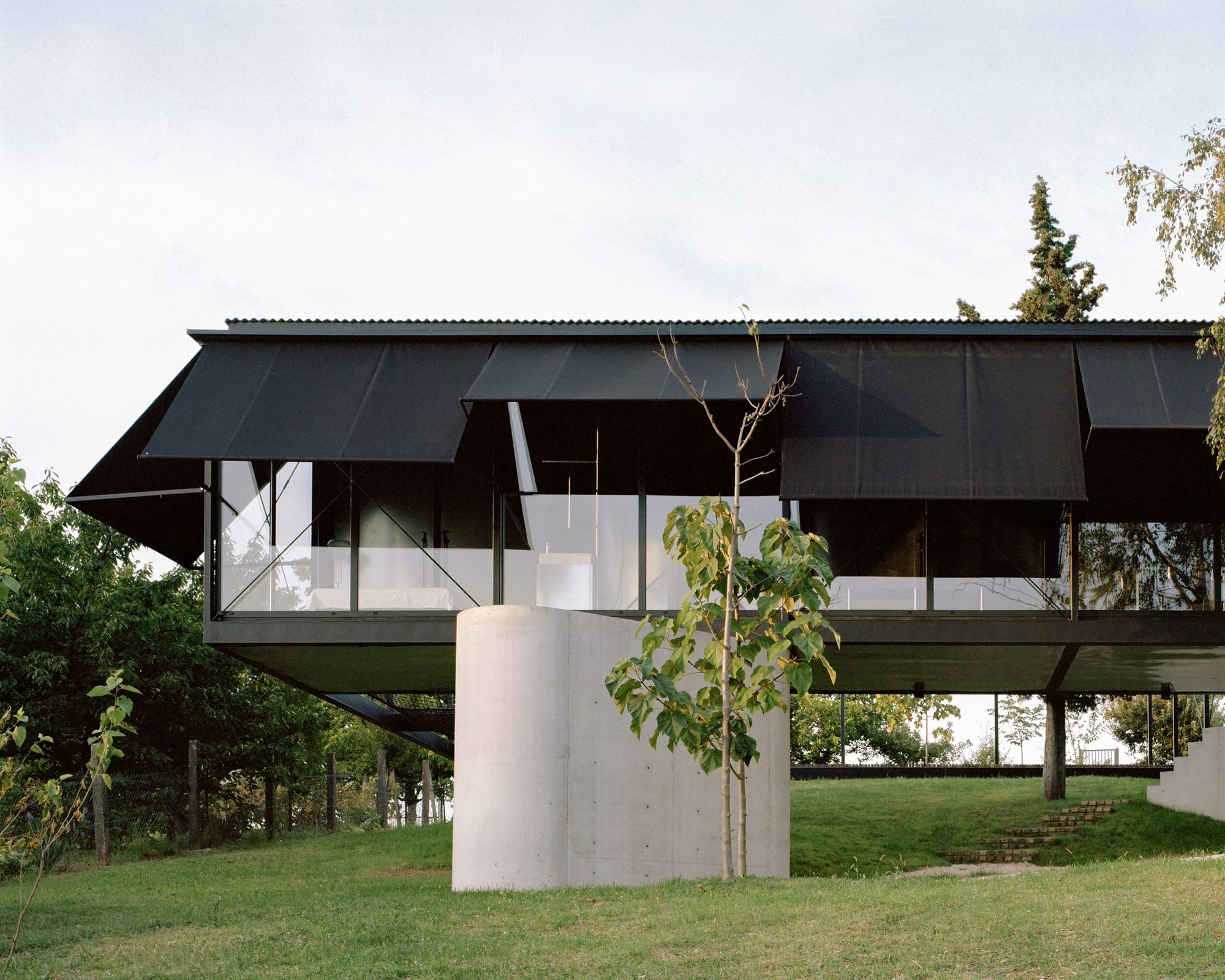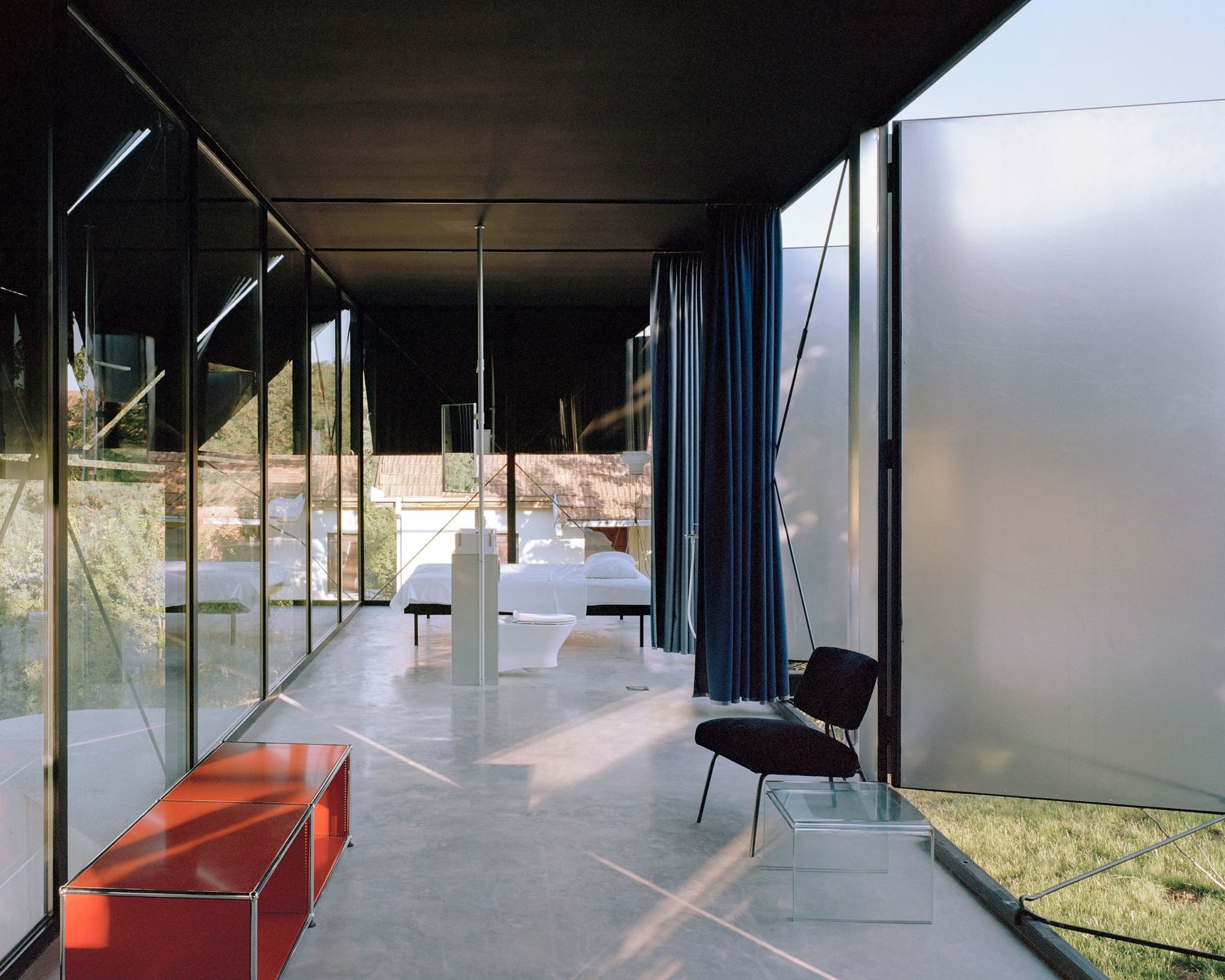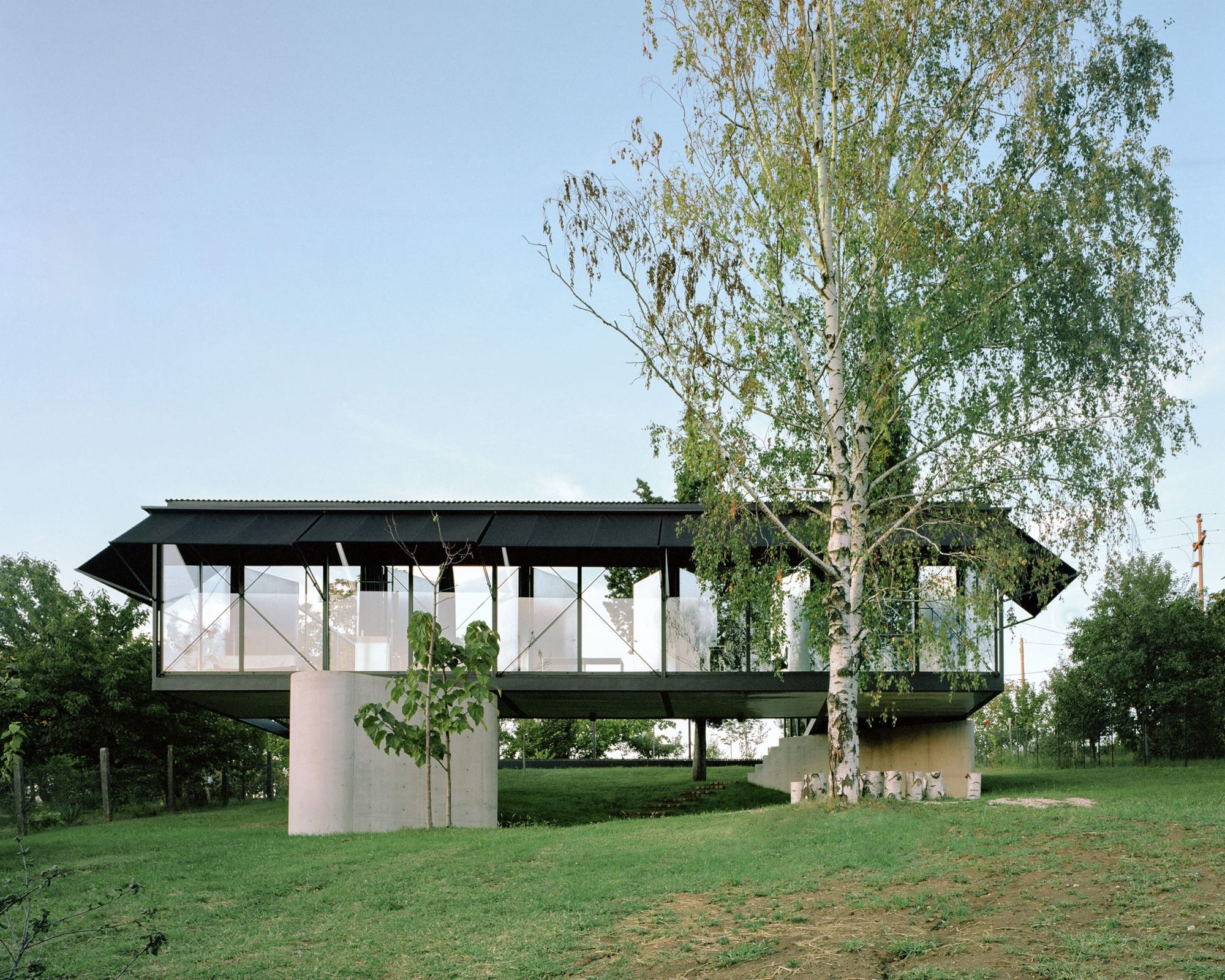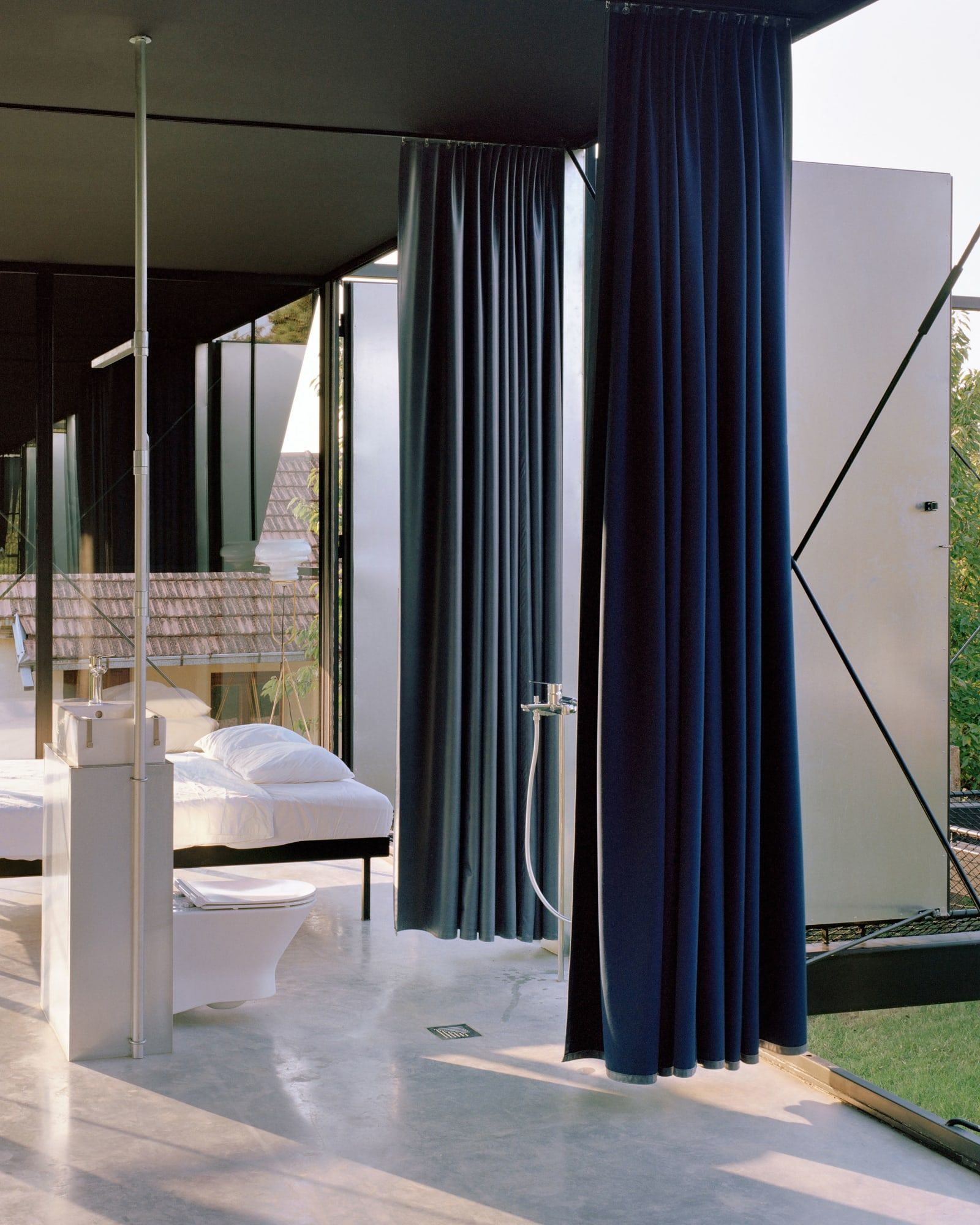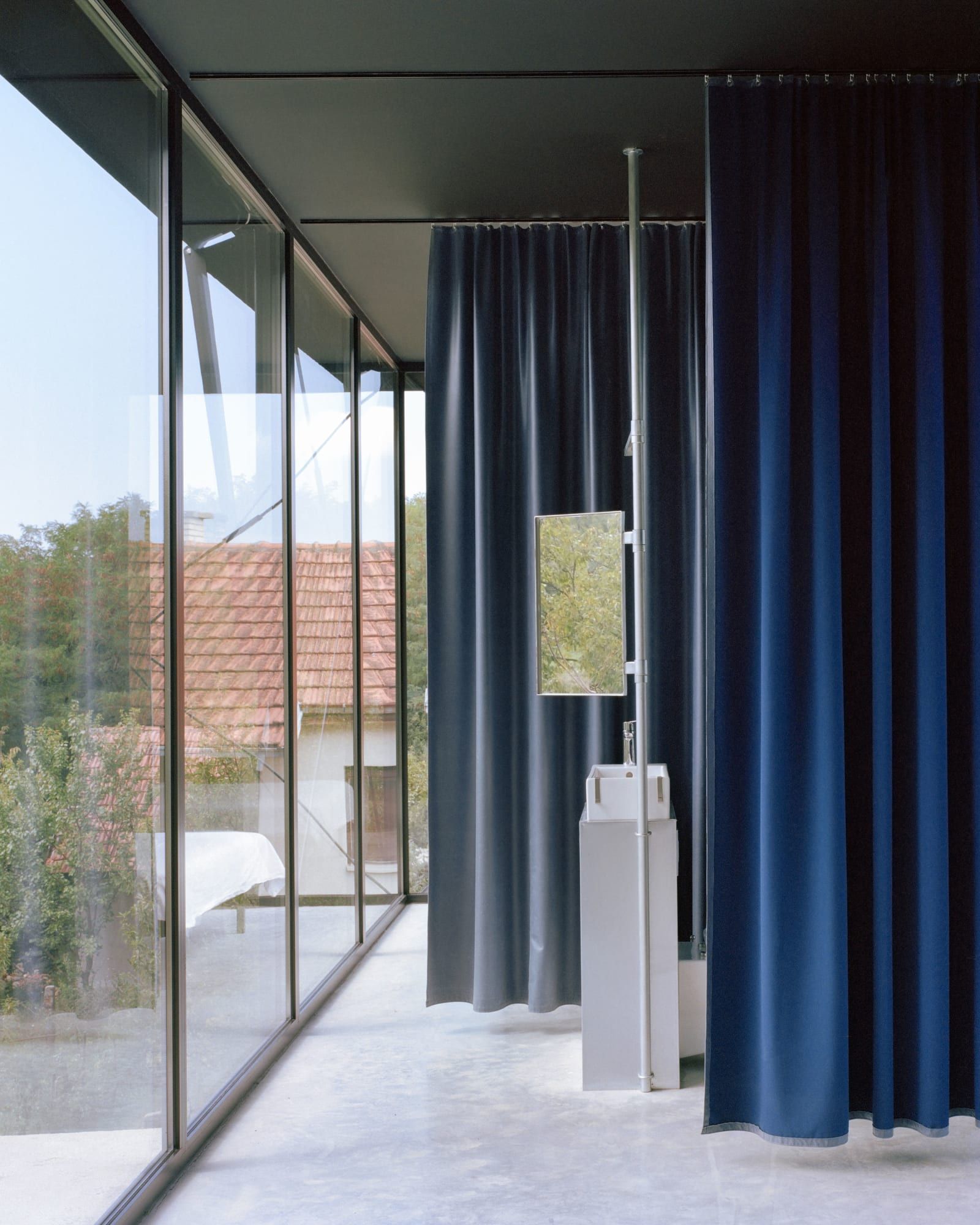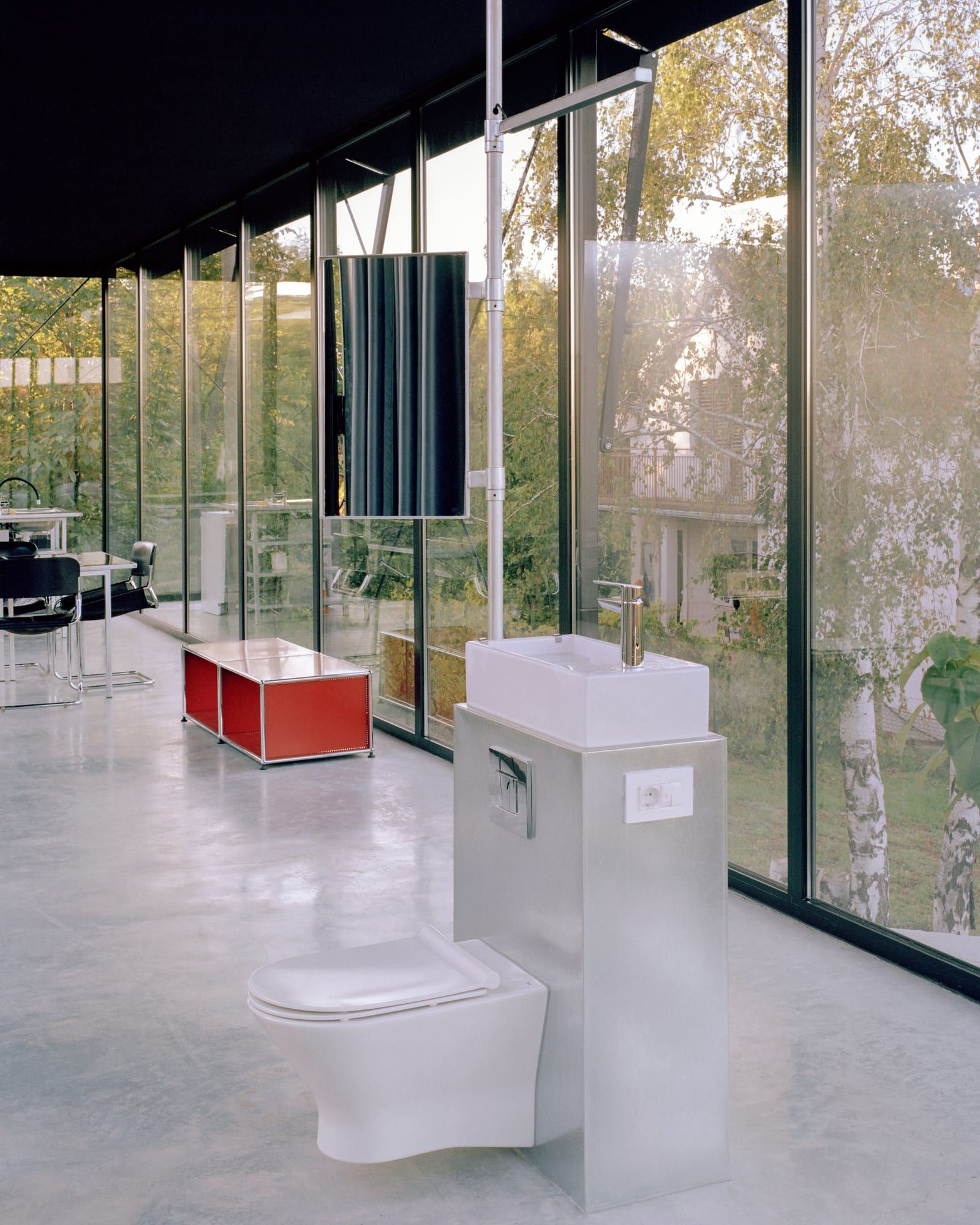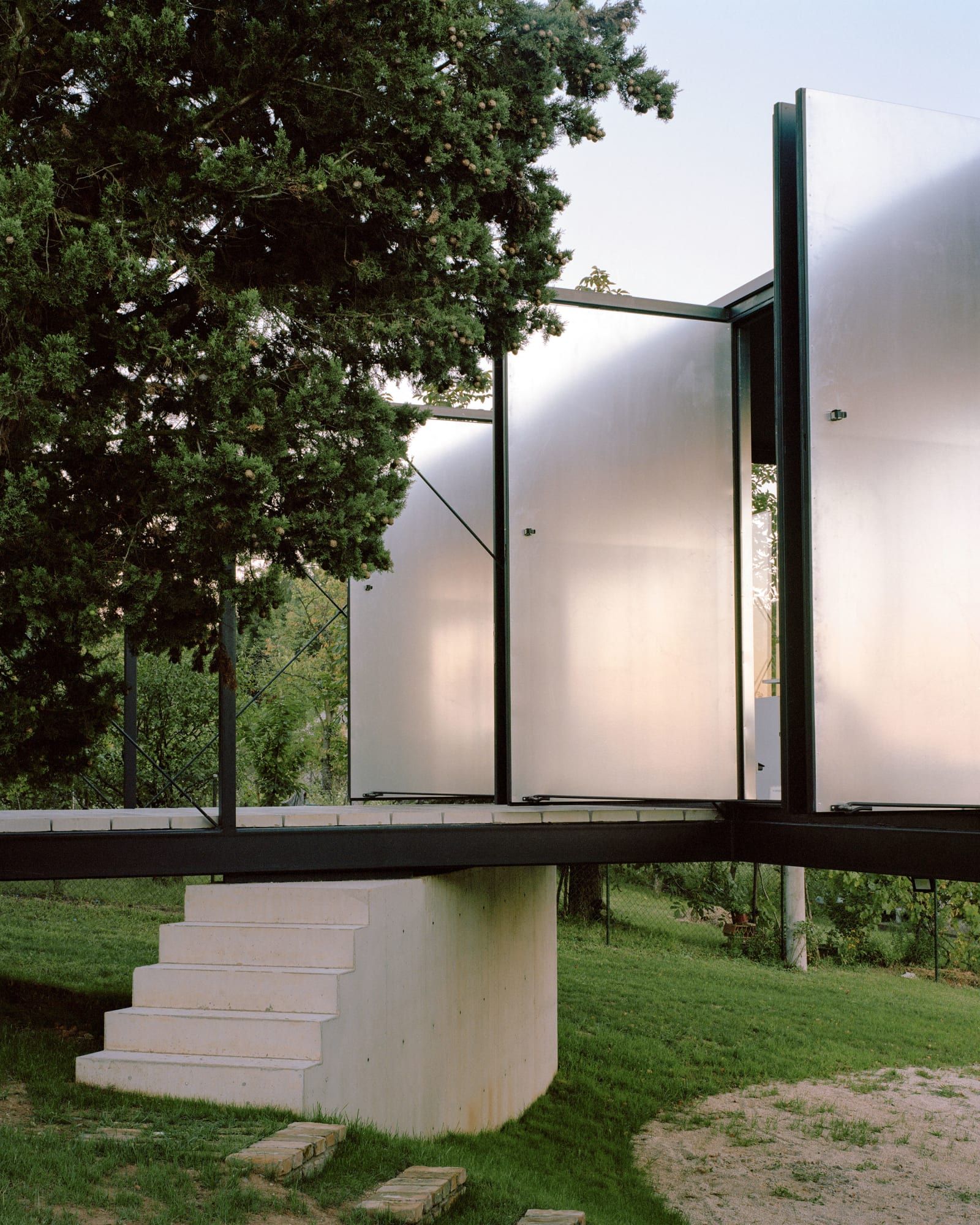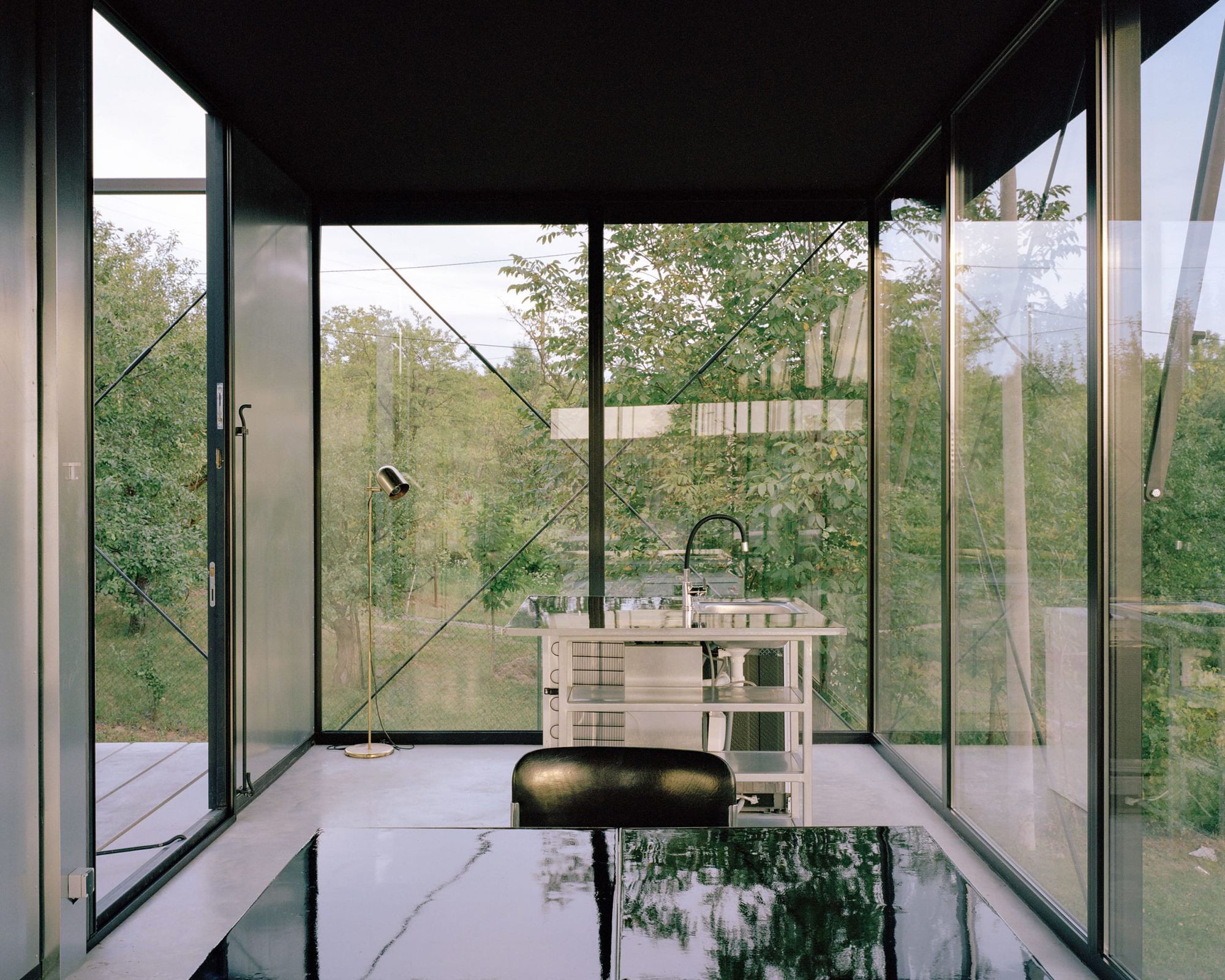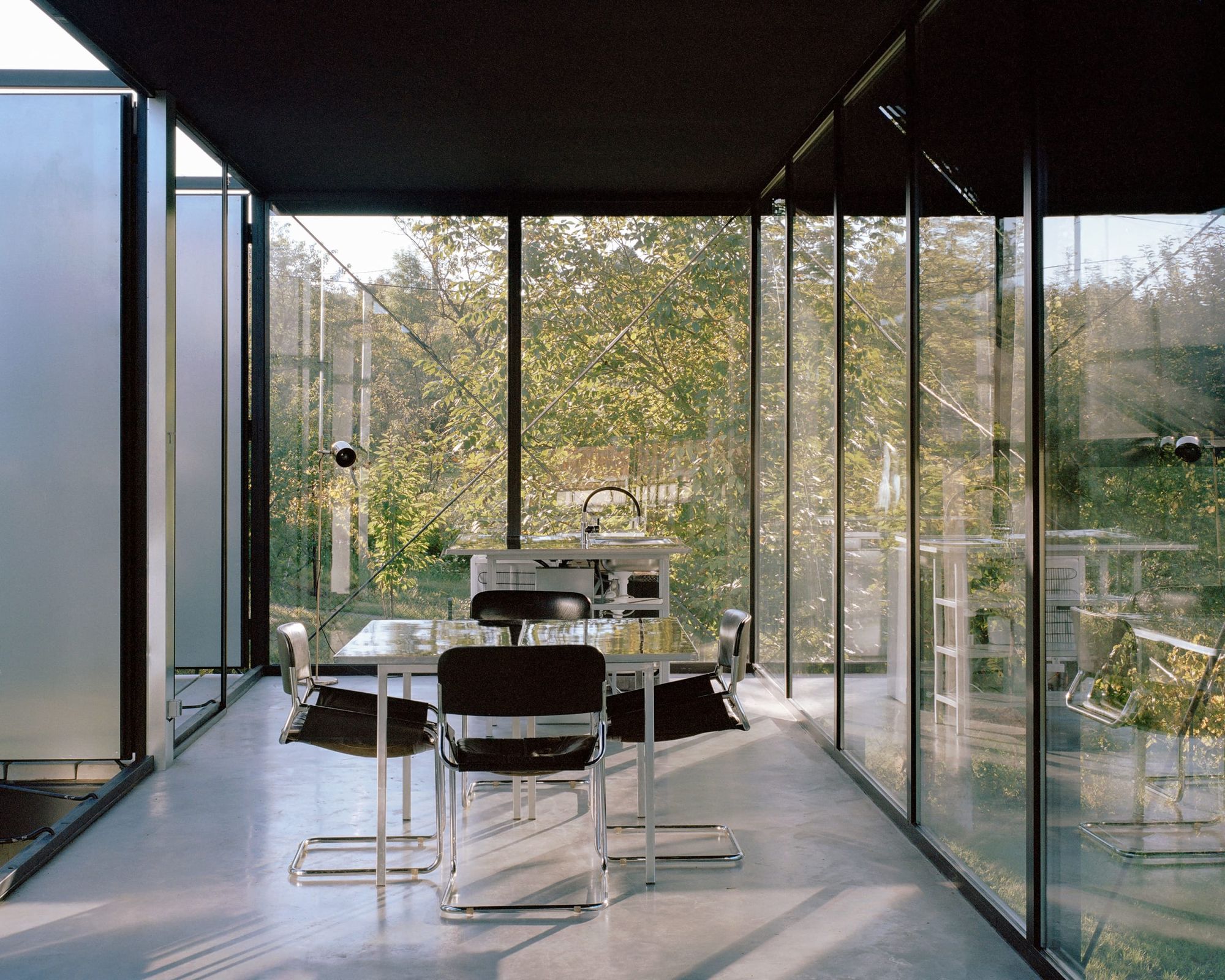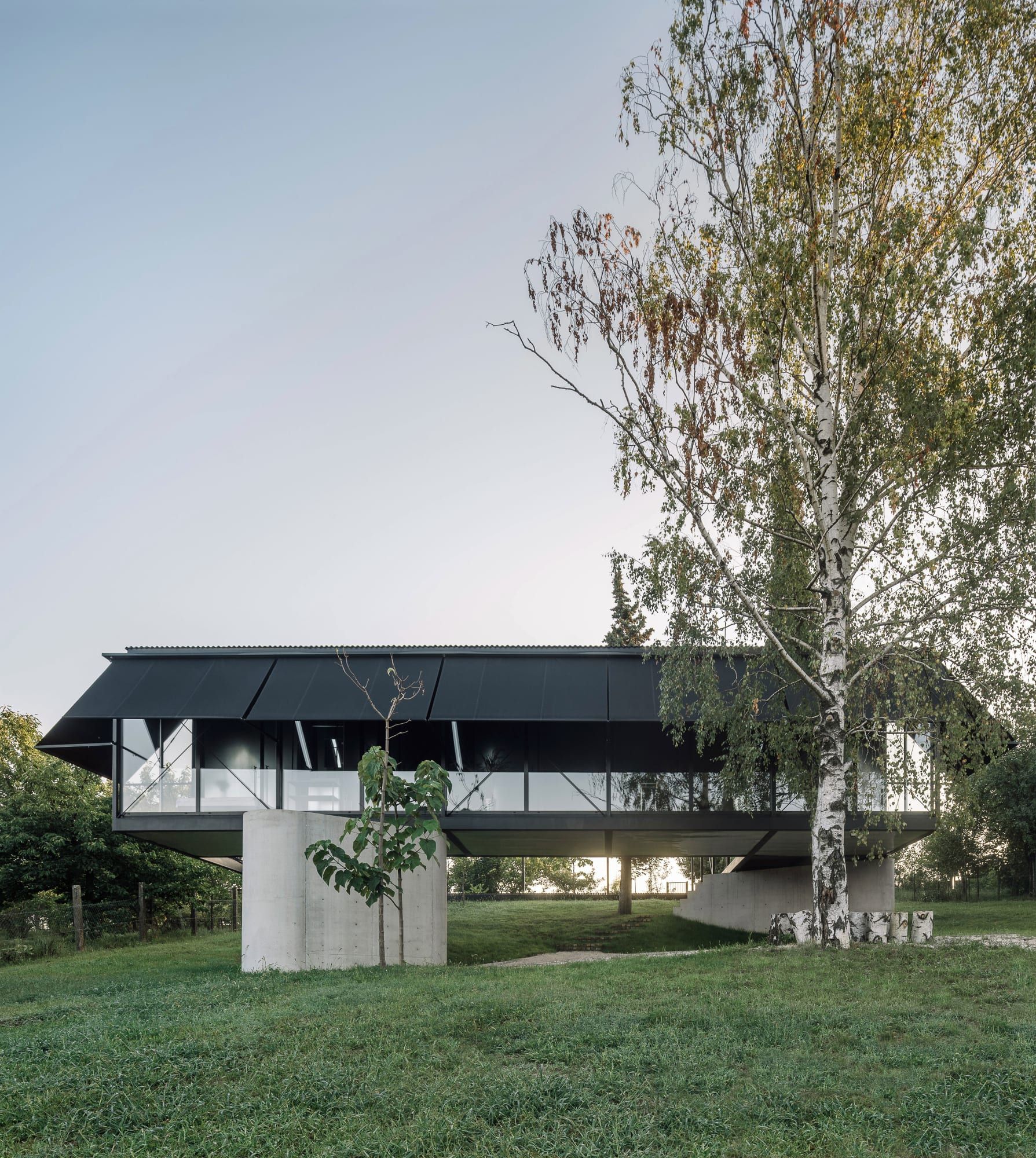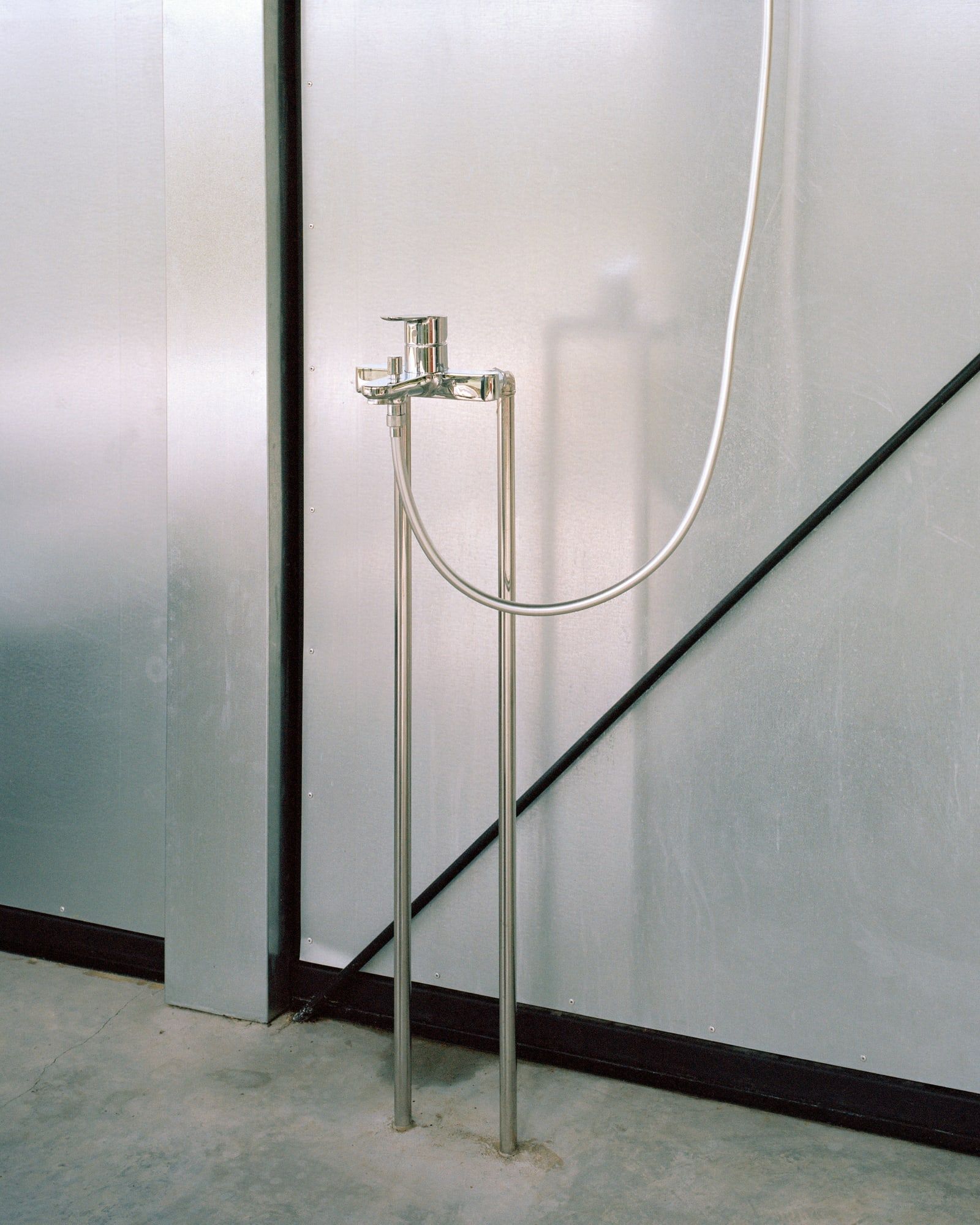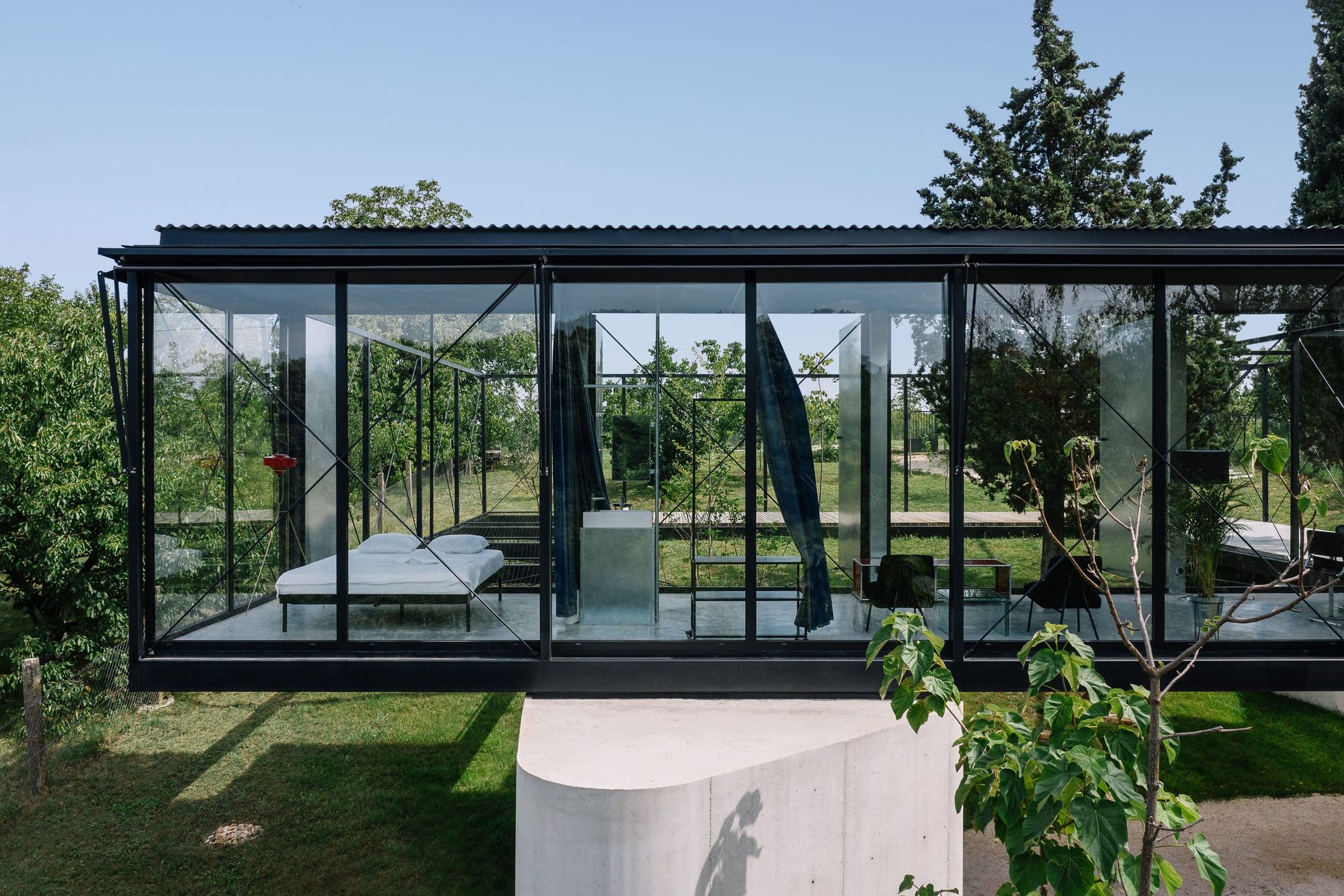The Avala House is a minimal residence located in Belgrade, Serbia, designed by TEN in collaboration with Miodrag Grbic. The house is a single-story space built over an existing southward inclining orchard garden. It is organised by a 3.2 metre grid frame, measuring 16 by 16 metre square, with an interior cut out of 9.6 by 9.6 metres revealing the terrain below. The surrounding surface forms both the inhabited area of the house and delimits the building perimeter. The frame utilises 80 millimetre square steel tube profiles welded in place and fixed to the structural minimum of three foundation points on the terrain. These points define the arrival area on the ground plane, and the positioning of two large concrete forms –like boulders in the landscape – dedicated to both an outside garden staircase and a storage space with a garden bathroom. The sloping terrain continues between and underneath the house, offering a shaded outdoor living space, and introduces the landscape, trees and natural ground cover into the central space of the building. The main floor above sets a new datum within the topography of the existing slope overlooking the surrounding forest. The open structure embraces the immediate landscape while setting a new clear geometry and strong architectural outline.
The plan is developed on the outer grid as a sequence of four terraces interlocking at corners to offer a new horizon for dwelling. Each terrace holds a different surface material, providing possibilities for a variety of use. The boundaries of the steel frame are constantly challenged by these alterations in material (a hanging net, sheet steel, pre-cast concrete, the open frame) or through the performance of its movable elements. These allow the house to undergo a total transformation of scale and atmosphere. The opaque wall facing the central interior space is made of 10 large pivoting steel doors, allowing the living area to shift from a singular indoor space of 50 square metres to embrace the 156 square metre volumes of the four outdoor terraces. The large stretch of glass on the southern facade of the frame extends the living space to the rise of the distant hills. The customised sun shading closes this expanse, giving a singular interior space, discretely partitioned by a series of floor to ceiling full-length curtains defining the sleeping area from the kitchen, dining, sitting, and bathroom. In its open state, the main living is one in plan, dedicating the entire space to a single program if desired. The house inverts the priority of building a traditional protected shelter in nature, by allowing various scenarios of exposure to nature within the building.
Photography by Milos Martinovic and Maxime Delvaux
